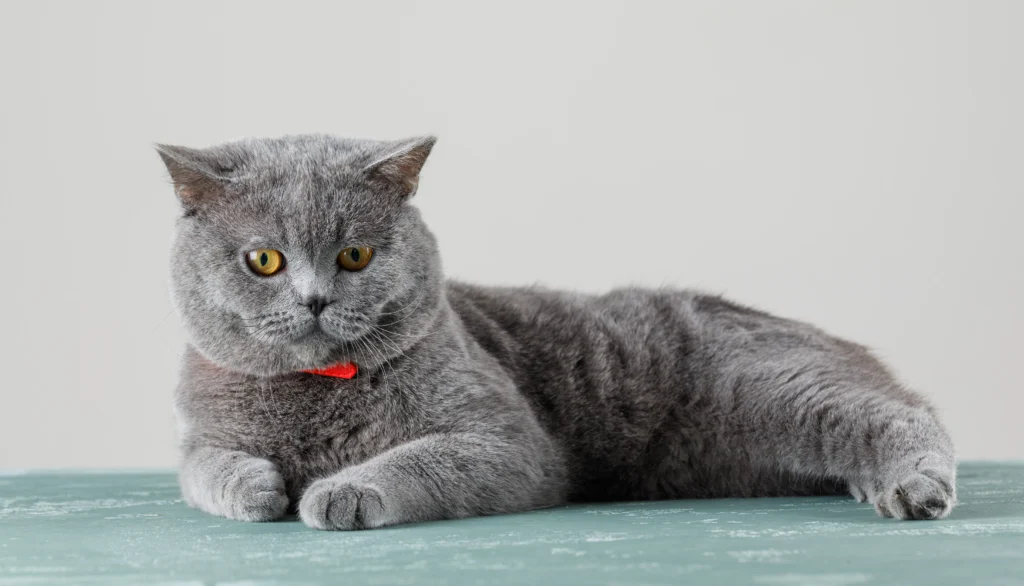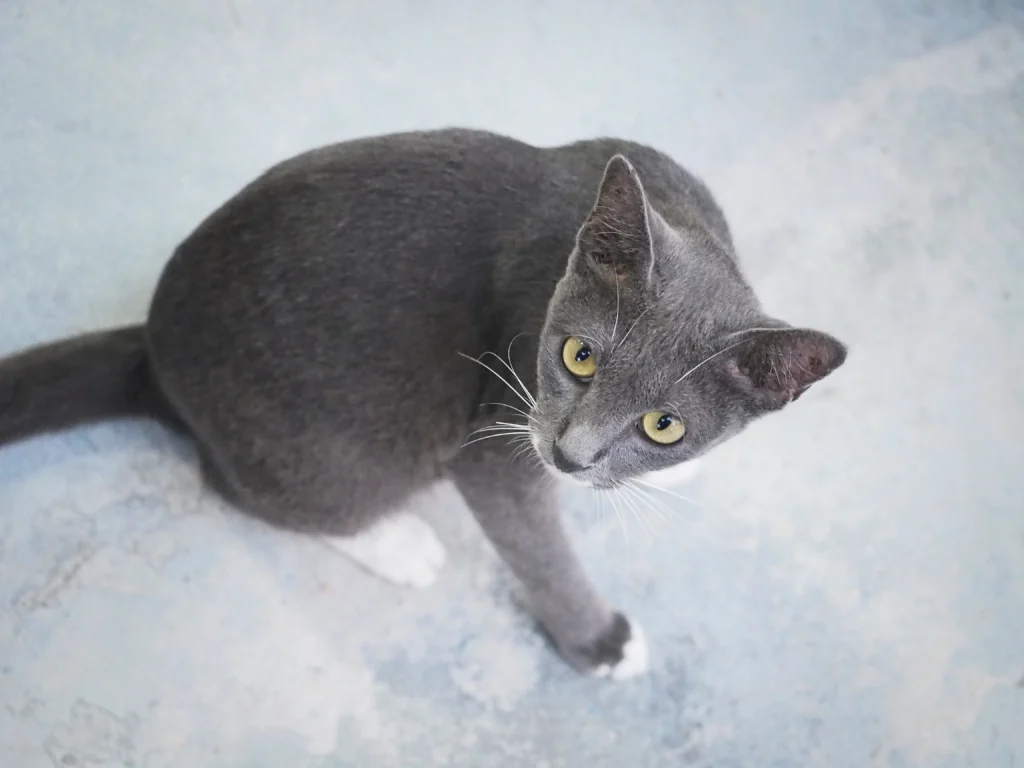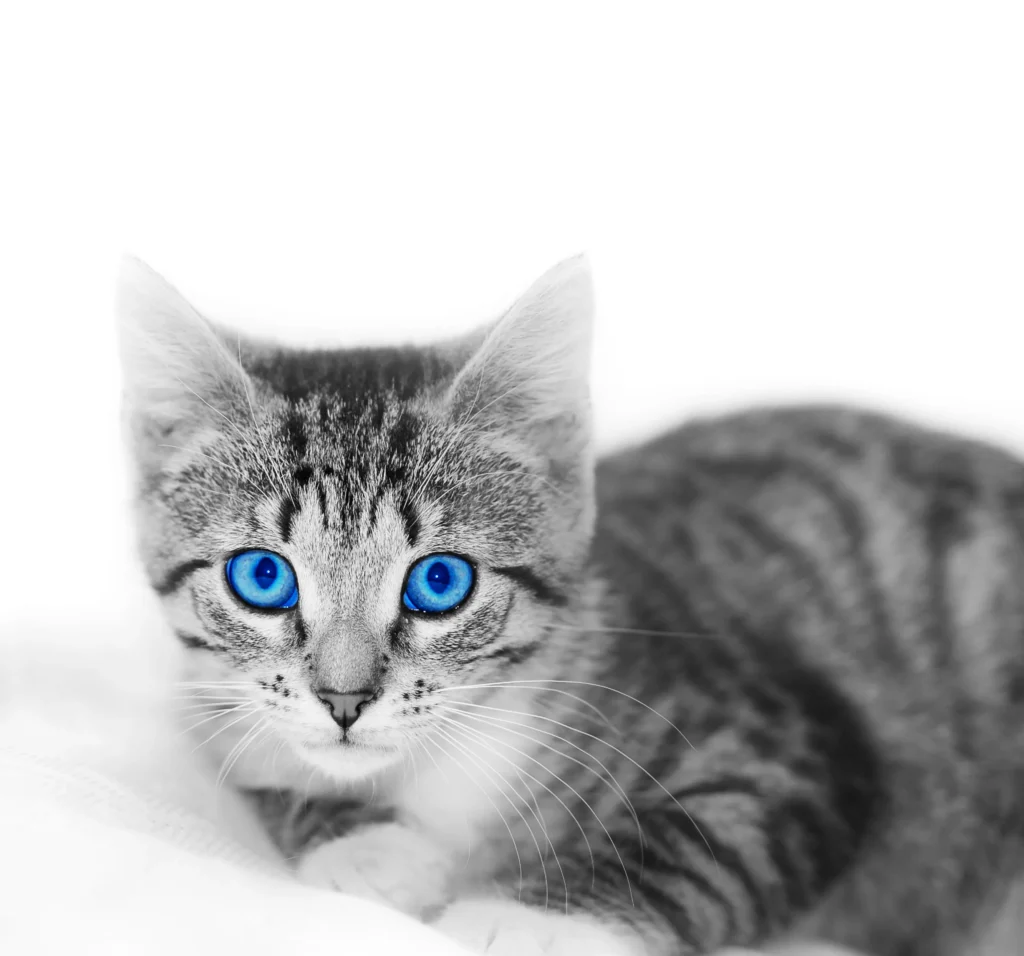Introduction
The journey toward Russian Blue cat adoption often begins with admiration for their striking silver-blue coat and emerald eyes. These elegant felines have captivated cat lovers worldwide with their distinctive appearance and charming personalities. However, as with any significant decision involving a living being, there are aspects of Russian Blue cat adoption that may catch potential owners by surprise.
Before you commit to adopting a Russian Blue cat, it’s essential to understand some hard truths that experienced owners and rescue organizations wish they had known from the start. While Russian Blue cats make wonderful companions, being prepared for the challenges as well as the joys of Russian Blue cat ownership will help ensure a successful adoption experience.
In this comprehensive guide, we’ll explore five brutal truths about Russian Blue cat adoption that potential owners should consider before bringing one of these beautiful felines home. From the reality of finding a Russian Blue cat for adoption to understanding their unique personality traits and care requirements, this article aims to provide you with honest insights that will prepare you for the rewarding—but sometimes challenging—journey of Russian Blue cat adoption.
Truth #1: Authentic Russian Blue Cats Are Rare in Shelters
When many people begin their search for Russian Blue cat adoption, they often envision visiting their local shelter and finding a purebred Russian Blue waiting for them. The brutal truth is that genuine Russian Blue cats rarely end up in rescue situations, making Russian Blue cat rescue a challenging endeavor.

Why Authentic Russian Blues Are Hard to Find
Genuine Russian Blues are relatively uncommon in the United States compared to other breeds. Most cats that appear to be Russian Blues in shelters are actually domestic shorthairs with similar coloring. While these “Russian Blue mixes” can make wonderful pets, they may not possess all the distinctive traits of purebred Russian Blues.
According to data from major animal rescue organizations, less than 2% of cats in shelters are purebred cats of any variety. This makes the chances of finding a Russian Blue cat for adoption at your local shelter quite slim.
What’s Often Available Instead
What many shelters label as “Russian Blue” cats are usually:
- Domestic shorthairs with blue-gray coats
- Mixed-breed cats with some Russian Blue ancestry
- Other blue-gray breeds like Korats or Chartreux
If you’re determined to adopt a Russian Blue cat, be prepared to:
- Join waiting lists at multiple shelters
- Connect with Russian Blue-specific rescue groups
- Expand your search nationally rather than just looking for “Russian Blue cat adoption near me”
- Consider adopting a Russian Blue mix instead of a purebred
Many people who initially search for where to adopt Russian Blue cats end up expanding their criteria after learning about the scarcity of purebred rescue Russian Blues.
Success Stories Despite the Odds
While challenging, Russian Blue rescue adoption success stories do exist. For example, the PetsPump Russian Blue Resource Page shares stories of lucky adopters who found their perfect Russian Blue companions through dedicated patience and networking.
These adopters often waited months or even years before the right Russian Blue cat for adoption became available, but they universally agree that the wait was worthwhile.
Truth #2: The Adoption Process Can Be Lengthy and Competitive

For those committed to Russian Blue cat adoption, the second brutal truth is that the process can be significantly more time-consuming and competitive than adopting other cat breeds.
The Reality of Russian Blue Adoption Wait Times
Due to their scarcity and popularity, the Russian Blue adoption process typically involves:
- Extensive application processes
- Home visits and interviews
- Reference checks
- Waiting periods that can extend from months to years
Many Russian Blue cat breeders maintain waiting lists for their kittens, with prospective owners sometimes waiting over a year for Russian Blue kitten adoption opportunities. Similarly, rescue organizations often have multiple applicants for each Russian Blue that becomes available.
The Financial Investment
Another aspect rarely discussed is the range of Russian Blue adoption fees you might encounter:
- Shelter adoption for a cat labeled as a Russian Blue: $75-200
- Russian Blue-specific rescue organizations: $200-500
- Reputable Russian Blue cat breeders: $800-2,000+
While adopting from shelters is the most affordable option, finding an authentic Russian Blue this way is rare. The reality is that adopting a Russian Blue often requires a significant financial investment, especially if working with reputable Russian Blue cat breeders.
Navigating the Competitive Process
To improve your chances of successful Russian Blue cat adoption:
- Complete applications thoroughly, demonstrating your knowledge about the breed
- Be flexible about age, gender, and minor physical traits
- Consider adopting bonded pairs if available
- Establish relationships with rescue organizations before a cat becomes available
- Be prepared to travel beyond your immediate area
As mentioned on the PetsPump Cat Adoption Guide, creating connections with rescue organizations can significantly improve your chances of being selected when a Russian Blue becomes available.
Truth #3: Russian Blue Personalities Aren’t Always What You Expect

Many prospective owners have specific expectations about Russian Blue cat personality that don’t always align with reality. This mismatch between expectations and the actual experience of adopting a Russian Blue cat can lead to challenges during the adjustment period.
The Personality Reality Check
While Russian Blues are generally known for being gentle and somewhat reserved, individual cats vary significantly. Some common misconceptions about Russian Blue cat personality include:
Myth: All Russian Blues are immediately affectionate. Reality: Many Russian Blues are initially shy and take months to fully warm up to new owners. The Russian Blue adoption process requires patience as they adjust to their new environment.
Myth: Russian Blues are low-maintenance companions. Reality: While not as demanding as some breeds, Russian Blues require consistent interaction, mental stimulation, and routine. Adopting a Russian Blue means committing to meeting these needs.
Myth: Russian Blues get along with all family members immediately. Reality: When adopting Russian Blue cats, be prepared for them to bond strongly with one person while remaining reserved around others for an extended period.
Adjustment Period Realities
When adopting a Russian Blue kitten or adult cat, expect:
- A hiding period that may last weeks
- Gradual trust-building rather than immediate affection
- Possible temporary behavioral issues during transition
- Slow integration with existing pets
As noted in several Russian Blue cat adoption reviews, these cats often take 3-6 months to fully reveal their personalities after adoption.
The True Russian Blue Temperament
Despite these adjustment challenges, with patience, adopting a Russian Blue cat eventually reveals their authentic temperament traits:
- Deep loyalty to their chosen people
- Intelligent problem-solving abilities
- Playful nature that continues into adulthood
- Preference for routine and predictability
- Moderate vocalization compared to other breeds
As detailed on the PetsPump Cat Behavior Guide, understanding these temperament traits is crucial for successfully adopting Russian Blue cats and helping them thrive in their new home.
Truth #4: They Require More Specialized Care Than You Might Expect

Another brutal truth about Russian Blue cat adoption is that these elegant felines often require more specialized care than many prospective owners anticipate. While not the most high-maintenance breed, Russian Blue cat care includes several considerations that differ from typical domestic cats.
Dietary Considerations
Russian Blues have a notorious tendency toward weight gain, which can lead to health problems if not properly managed. When adopting a Russian Blue from shelter environments or less knowledgeable sources, they may already have developed poor eating habits that need correction.
Proper Russian Blue cat care includes:
- Measured feeding rather than free-feeding
- High-quality protein sources
- Monitored treat consumption
- Possible prescription food for older Russian Blues
- Regular weight monitoring
Grooming Realities
While Russian Blues are often promoted as low-shedding, the reality after Russian Blue adoption is more nuanced:
- They experience seasonal heavy shedding periods
- Their dense double coat requires weekly brushing minimum
- Their plush coat shows dust and debris more visibly than some other coat types
- Regular grooming sessions are essential for coat health and bond-building
Environmental Needs
Adopting a Russian Blue also means creating an environment that addresses their specific needs:
- Multiple elevated resting spots for observation
- Consistent temperature (they dislike extreme heat or cold)
- Interactive puzzle toys for mental stimulation
- Stable routines with minimal environmental changes
- Quiet spaces for retreat during overstimulating situations
As explained on the PetsPump Cat Care Essentials, creating an environment that caters to these specific needs significantly improves the Russian Blue adoption experience for both the cat and owner.
Health Monitoring
Russian Blues are generally healthy, but adopting a Russian Blue means being vigilant about:
- Dental health (they’re prone to periodontal issues)
- Thyroid function monitoring as they age
- Weight management to prevent obesity-related conditions
- Stress-related digestive issues during transitions
These specialized care requirements aren’t widely discussed in general Russian Blue adoption tips but are crucial for long-term health and happiness.

Perhaps the most significant yet least discussed aspect of Russian Blue cat adoption is the emotional investment these relationships require. Russian Blue cats form exceptionally strong bonds with their owners, which comes with both rewards and challenges.
Separation Anxiety Realities
When adopting a Russian Blue cat, many owners are unprepared for the potential separation issues that may arise:
- Russian Blues often experience distress when their routine is disrupted
- They may show signs of anxiety when left alone for extended periods
- Some develop behaviors like excessive grooming or vocalization when stressed
- They remember perceived slights or changes for extended periods
This means that adopting a Russian Blue is not ideal for those with unpredictable schedules or frequent travel unless robust support systems are in place.
The Depth of Bonding
The Russian Blue adoption experience typically includes an extraordinarily deep bond that develops over time:
- They often become “velcro cats” with their preferred person
- They may follow their owners from room to room
- They frequently develop routines centered around their human’s schedule
- They can sense and respond to their owner’s emotional states
This intense bonding is why many Russian Blue cat adoption stories describe these relationships as more dog-like than typical cat relationships.
Long-term Commitment
The Russian Blue lifespan typically ranges from 15-20 years, making Russian Blue adoption a substantial commitment:
- They may require increased medical care in their senior years
- Their attachment makes rehoming particularly traumatic for them
- Life changes like moving, new family members, or schedule changes require careful management
According to Russian Blue cat adoption reviews, these cats often become more attached and dependent as they age rather than more independent.
The Emotional Reality
As highlighted in numerous adopting Russian Blue cats testimonials on PetsPump’s Success Stories, the emotional intensity of these relationships can be surprising even for experienced cat owners.
One adopter explains: “I’ve had many cats throughout my life, but the relationship with my adopted Russian Blue is completely different. It’s more emotional, more connected, and frankly, more demanding than I expected. It’s wonderful, but it’s also a significant responsibility.”
Conclusion: Is Russian Blue Cat Adoption Right for You?
After exploring these five brutal truths about Russian Blue cat adoption, you might be wondering if adopting a Russian Blue is the right choice for your situation. Despite the challenges, thousands of satisfied owners confirm that the rewards of Russian Blue cat adoption far outweigh the difficulties for the right homes.
When Russian Blue Adoption Makes Sense
Adopting a Russian Blue cat or kitten is likely a good fit if you:
- Appreciate a cat that forms deep, loyal bonds
- Have a relatively stable routine and lifestyle
- Can provide patient adjustment periods for new pets
- Are willing to invest in quality care, food, and enrichment
- Understand that finding the right Russian Blue may take time
- Value intelligence and subtle communication in pets
When to Consider Other Options
Russian Blue adoption might not be ideal if you:
- Desire an immediately affectionate, outgoing cat
- Have a highly unpredictable schedule or travel frequently
- Seek a low-maintenance pet that adapts quickly to change
- Are unwilling or unable to address potential behavior challenges
- Need a cat that immediately integrates with children or other pets
Final Adoption Considerations
As you contemplate adopting a Russian Blue from shelter, rescue, or breeder sources, remember:
- Be honest about your lifestyle: Russian Blues thrive with owners whose lifestyles match their need for routine and connection.
- Consider age carefully: While Russian Blue kitten adoption offers the joy of raising a cat from youth, adult Russian Blues often have established personalities that may better match certain homes.
- Prepare your home: Before bringing home your Russian Blue, cat-proof your environment and gather appropriate supplies as outlined in PetsPump’s New Cat Checklist.
- Build a support network: Connect with veterinarians familiar with the breed and other Russian Blue owners who can offer guidance.
- Commit to the relationship: Remember that Russian Blue cat adoption is a long-term commitment that will likely span 15+ years.
When approached with realistic expectations and proper preparation, Russian Blue cat adoption can be an incredibly rewarding experience. These distinguished felines offer companionship, intelligence, and devotion that make the challenges of finding and adapting to a Russian Blue well worth the effort.
For additional resources on Russian Blue cats and adoption guidance, explore our comprehensive guides on PetsPump.com.
Additional Resources for Russian Blue Cat Adoption
Rescue Organizations Specializing in Russian Blues
Reliable Information Sources
- Cornell University College of Veterinary Medicine
- The Cat Fanciers’ Association
- PetMD Russian Blue Guide
Books About Russian Blues
- “Russian Blue Cats as Pets” by Roland Glover
- “The Complete Guide to Russian Blue Cats” by David Anderson
- “Understanding Your Russian Blue Cat” by Mary Matthews
This article has been created to provide comprehensive information about Russian Blue cat adoption for potential owners in the United States. Remember that every cat is an individual, and while breed tendencies exist, your specific Russian Blue adoption experience may vary.






